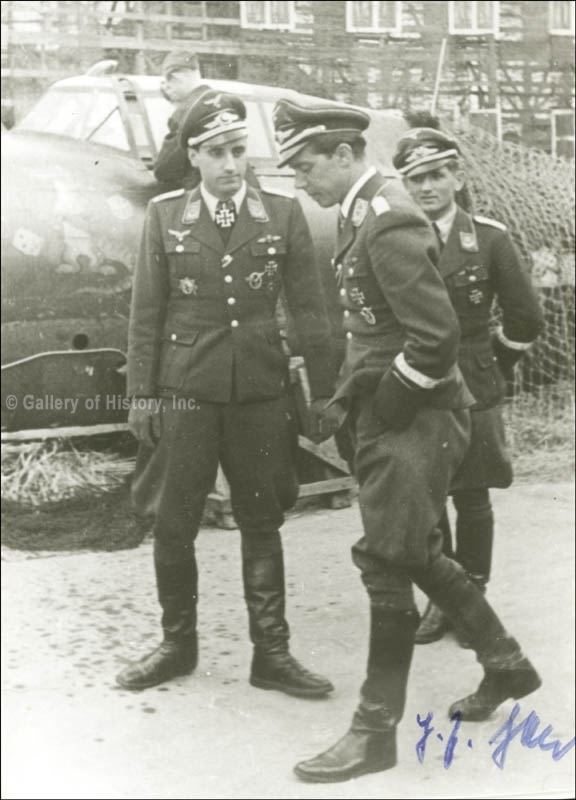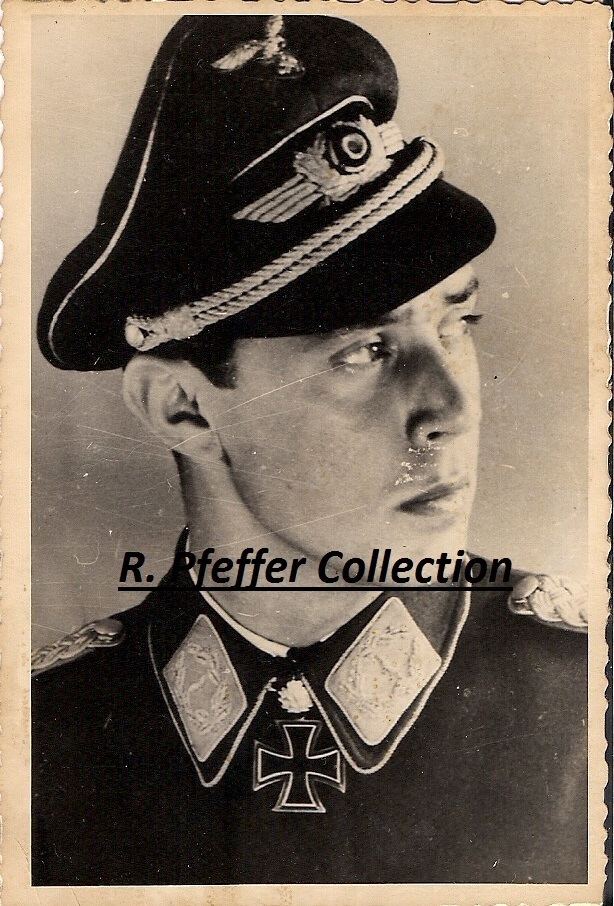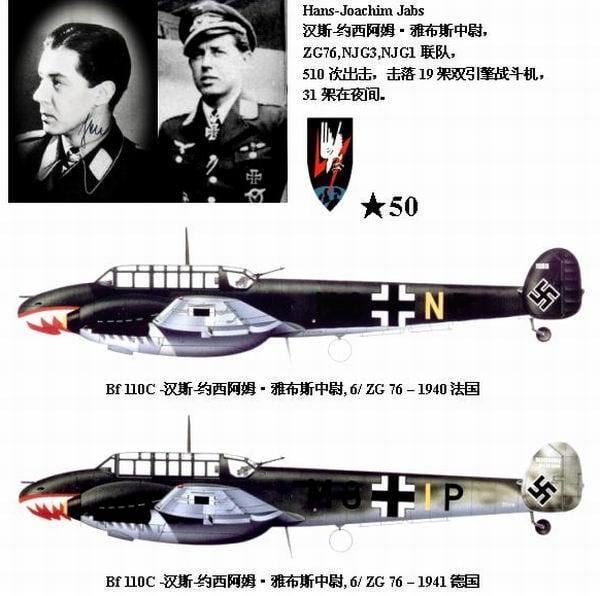Name Hans-Joachim Jabs Years of service 1936–45 | Other work businessman | |
 | ||
Born 14 November 1917Lubeck ( 1917-11-14 ) Battles/wars World War IIDefense of the ReichBattle of Britain Died October 26, 2003, Ludenscheid, Germany Unit Zerstorergeschwader 76, Nachtjagdgeschwader 1 | ||
Hans-Joachim Jabs (14 November 1917 – 26 October 2003) was both a day and night fighter ace in the German Luftwaffe during World War II. 50 victories were scored. Jabs flew variants of the Messerschmitt Bf 110 Zerstörer heavy day fighter and night fighter.
Contents

Biography

Born in Lübeck in 1917, Jabs joined the Luftwaffe in 1937. Originally trained as a Messerschmitt Bf 109 pilot, Jabs was posted to Zerstörergeschwader 76 (ZG 76), flying the Messerschmitt Bf 110, in March 1940.

A member of II./ZG 76, Jabs operated over France in mid 1940, claiming four French aircraft and RAF fighters. He then flew over the British Isles during the Battle of Britain. Despite the vulnerability of the Bf 110 against the more nimble Royal Air Force (RAF) aircraft, and the heavy losses incurred, Jabs claimed eight Spitfires and four Hurricanes destroyed. By the end of the year Jabs was one of the top scoring Zestörer (destroyer) pilots, with 16 victories.

In 1941 the majority of the Bf 110 units were withdrawn from daylight fighting, and Jabs was transferred to night fighting and Defense of the Reich. Retrained by October 1941, Jabs joined Nachtjagdgeschwader 3 stationed near Hamburg, protecting the port and Kriegsmarine installations. Opportunities for scoring remained elusive however, with just one more kill by June 1942. In November 1942 he transferred to IV./NJG 1. By January 1944 he had 45 kills to his credit, and in March 1944 became NJG 1 Geschwaderkommodore.

On 29 April 1944 his Bf 110-G night fighter was caught on a daylight air test by a flight of six Spitfires from No. 132 Squadron RAF, led by Squadron Leader Geoffrey Page (an ace with 15 kills). The Spitfires came in at too high a speed and Jabs shot down one Spitfire, flown by P/O R. B. Pullin, which went down in flames, killing the pilot. Another Spitfire flown by F/O J.J. Caulton then attacked Jabs head on, though the heavy forward armament of the 110 took effect and the stricken Spitfire glided around and belly-landed onto Deelen Air Base. Jabs then conducted a surprise forced landing, quickly scrambling for cover before his aircraft was destroyed by strafing.
Hans-Joachim Jabs was awarded the Knight's Cross of the Iron Cross with Oak Leaves (Eichenlaub zum Ritterkreuz des Eisernen Kreuzes) on 24 March 1944. He remained Kommodore of Nachjagdgeschwader 1 until the end of the war. He ended his career as an Oberstleutnant with 50 kills to his credit, 22 of these being day victories against Allied fighters technically far superior to his Bf 110. Jabs flew a total of 710 missions.
Jabs became a businessman in Westphalia after the war. He was a vice-president of the Gemeinschaft der Jagdflieger.
